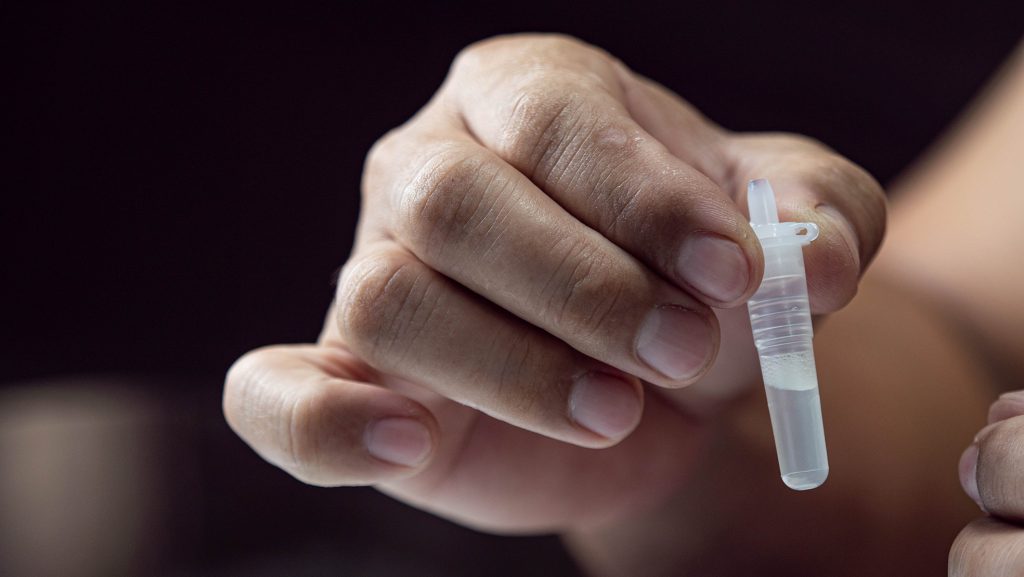Saliva as a diagnostic tool for asymptomatic SARS-CoV-2 infection

Accurate and rapid testing of SARS-CoV-2 infection is key to timely management of symptoms and prevention of disease transmission. Real-time RT-PCR (rRT-PCR) performed using nasopharyngeal and respiratory specimens are the current gold standard for COVID-19 diagnosis. However, collection of nasopharyngeal samples may cause discomfort to patients, owing to the procedure’s invasiveness. Additionally, owing to low sensitivity, exposure risks to healthcare personnel, and a global shortage of swabs and personal protective equipment (PPE) associated with the collection of respiratory samples, current practice dictates that only those patients with severe symptoms or in close contact with positive cases undergo testing, with asymptomatic cases being completely undetected. Such challenges have necessitated the development of newer diagnostic approaches, particularly those aimed at detection of asymptomatic SARS-CoV-2 infection.1
Saliva-based testing can be a promising alternative to nasopharyngeal sampling, because saliva collection is easy to self-complete, negates the need for PPE or specialized personnel, and is suitable for mass screening procedures.1-5 Indeed, the oral cavity has been shown to play an active role in the pathogenesis of SARS-CoV-2 infection, confirmed by the overexpression of ACE2 receptors on the epithelial cells of the oral mucosa and salivary secretion of SARS-specific secretory immunoglobulin A.2,3 Furthermore, studies have elucidated the potential for expelled oral droplets to be a source of airborne transmission of SARS-CoV-2, even from those who are asymptomatic.1,3
Tutuncu EE and colleagues (Kafkas University, Turkey) validated the diagnostic value of saliva for SARS-CoV-2 detection in asymptomatic (n=28) and mildly symptomatic (n=25) COVID-19 patients.5 Saliva samples of patients aged between 4 and 70 years (median: 37 years) were collected within 12 hours of COVID-19 diagnosis (as confirmed by nasopharyngeal samples); saliva was subsequently subjected to rRT-PCR analysis.5
Their study found that:5
- RT‐PCR positivity was detected in 90.56% saliva samples of mildly symptomatic and asymptomatic confirmed COVID‐19 patients.
- Among the 53 patients with SARS-CoV-2, as detected in the nasopharyngeal samples, 48 patients’ saliva samples also tested positive for COVID-19.
- Saliva samples were comparable to nasopharyngeal samples in patients with and without radiologic evidence of lung involvement.
Consistent RT-PCR positivity of saliva specimens of asymptomatic COVID-19 patients highlight the transmission potential of this group of patients.5 Early recognition and isolation of such patients may be key to curbing the ongoing COVID-19 pandemic. The findings from Tutuncu EE et al indicate that saliva sampling may be a reliable alternative to nasopharyngeal swabs for the detection of SARS-CoV-2 in mildly symptomatic and asymptomatic patients.5
References
- Wyllie AL, et al. medRxiv 2020.04.16.20067835.
- Azzi L, et al. J Infect 2020;81(1):e45-e50.
- Czumbel LM, et al. medRxiv 2020.05.26.20112565.
- To KKW, et al. Clin Infect Dis 2020;71(15):841‐843.
- Tutuncu EE, Ozgur D, Karamese M. J Med Virol 2021;93(5):2932-2937.










